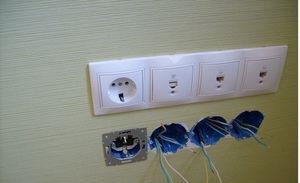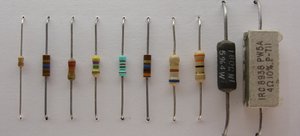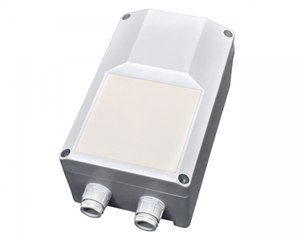Starter electromagnetic 380v: functions, which lead to overheating of the gasoline or diesel engine, operating modes
The electromagnetic starter 380v represents the specialized relay and carries out function of management of work of the three-phase asynchronous motor.. It performs its work when connecting the stator windings to the mains and carrying out a break in the current in them without first introducing a chain of additional resistors..
Control of the three-phase induction motor is performed by the device in just three steps: direct engine start, his stop, and protection against possible overloads is very important.
The main parameters of electromagnetic starters
In accordance with the main function of this device is its main element, and in some cases the only one, there is a three-pole electromagnetic contactor of alternating current. All the most important parameters of the starter are connected with it:
- switching capacity
- rated current and circuit voltage switched
- wear resistance of mechanical and switching nature.
Electromagnetic starters, as well as contactors, are indispensable devices in power load control circuits.
What does the starter consist of
To better understand the operation of the electromagnetic starter 380V, its mechanism should be considered in more detail, device. Knowledge of the elements of the device will allow you to answer questions in future work, arising or avoiding unpleasant situations.
so, what it consists of? The answer is very simple. There are three main elements:
-
Power contacts. Usually, no more than three of them. These contacts perform the function of switching the power load. It is impossible not to mention, that the rated current of the device refers to them.
- Electromagnetic coil. This element is designed to control the operation of the starter and it is designed for 220V or 380V. In our case it is 380v.
- Additional contact. This element plays a role in building a management scheme. In devices, designed for large rated currents, such elements can be several and different types: closes or opens. An additional contact also signals the status of the starter.
Wear resistance of starters
Starters are subject to high requirements for their wear resistance, since they are elements of automatic control systems. There are three classes of wear resistance in such devices, and they are denoted by the letters A, B and C.
In order to better understand this aspect, should be understood, as indicated by the presence in the device, example, class A. The point is, that the device with the highest degree of wear resistance is classified as class A.. And the starter with the smallest according to class Art. About the class, to which belongs one or another electromagnetic starter, you can learn from its technical characteristics, which must be indicated in his data.
The main characteristics of the device
The main characteristics of this device are:
- the maximum allowable value of the switched current, as well as voltage
- maximum value of current of additional contacts
- power consumption of the control coil, operating voltage (basically it's 220v or 380v)
- the estimated number of cycles of inclusion - exclusion. This value characterizes the wear resistance of the device
Operating modes of the device
Starter electromagnetic 380v, as well as devices, supporting other voltages, has several modes of operation, which are characterized by different duration of their activity. There are four of these modes: short, re-short-term, intermittently long, long.
Connection of the electromagnetic starter 380v
To connect this device, it is necessary to study all connection schemes before the beginning of the procedure and to understand work of starters. Design features of the device can serve as an auxiliary factor when connecting it. Schemes can seem extremely complex, but for all its apparent complexity, the whole procedure is quite simple, even in that case, if the user has never done this before and has never made such connections.
Starters can carry out reversible and non-reversible inclusion of electric motors, and have different performance. The latter factor depends on the operating conditions of the device.
The difference between 220V and 380V devices
As mentioned above, electromagnetic starter coils can be 220V or 380V. There are devices with coils, support other voltages, but we will not consider them, as they are quite rare.
The difference in the connection of these devices to 220V and 380V is their inclusion in the circuit. If the user is in an unpleasant situation, when all its wiring diagrams are designed for 220V electromagnetic starters, and in the hands of the starter electromagnetic 380V, then, perhaps, his mood will deteriorate, and you need to look for another device. That is the case, if the user does not understand this issue.
In fact, the situation is completely harmless and not even worth the nerve. There will be no difficulties in the event of such a question in the connection process. The point is, that the solution is quite simple. Only the bottom is needed (according to the existing scheme ) connect the output of the coil of the electromagnetic starter 380V to phase L2 or to phase L3, not to zero, as in the case of connecting the device to 220V.
By the way, it is worth mentioning that interesting fact, that the use of such a connection is even more interesting and desirable for the user. The presence of a 380V electromagnetic starter in the circuit allows you to create a circuit without zero. This means, what, not counting management, as many as three phases come and go on the engine.
Conclusions
The 380V electromagnetic starter is a very important link in the circuit, since this element controls the three-phase induction motor. It is very important to remember, that in addition to the start and stop functions, the device performs another important function - protection against engine overload.
The connection diagrams of this device are quite simple and even the user can handle them, who has not previously had any experience with such devices.
All technical characteristics, mentioned in the article above, can be found in the data, added to this device, so it will not be difficult to learn about the class of the device and the voltage, on which its electromagnetic coil works.
Inclusion in the circuit of the device at 380V in some cases is the best option, than using a similar device, but on 220v. There are no difficulties in changing the chain.
All connection schemes can be easily found on the Internet and guided without anyone's help. The connection process is simple, however, this has already been mentioned above in the article, so that the user will be able to handle everything. So good luck.



